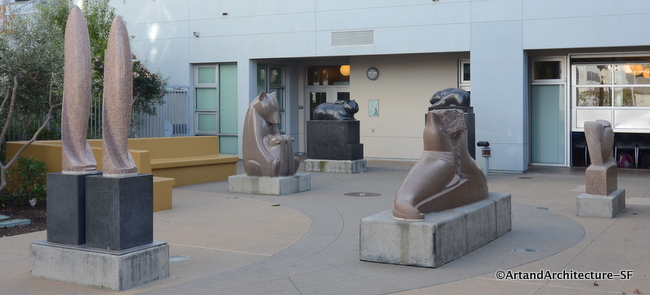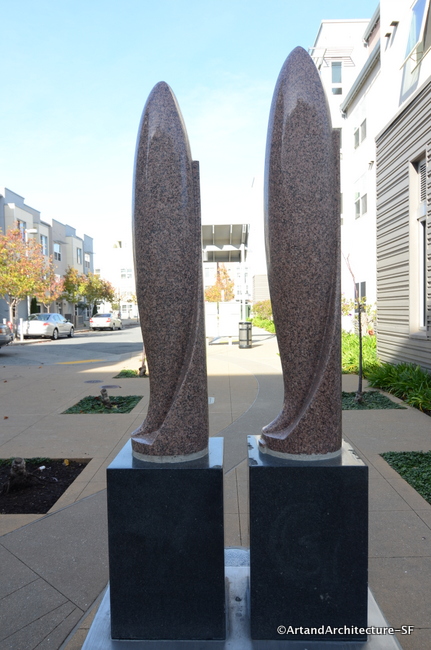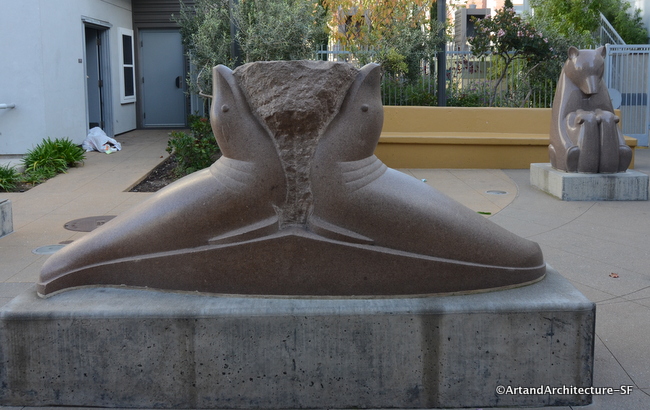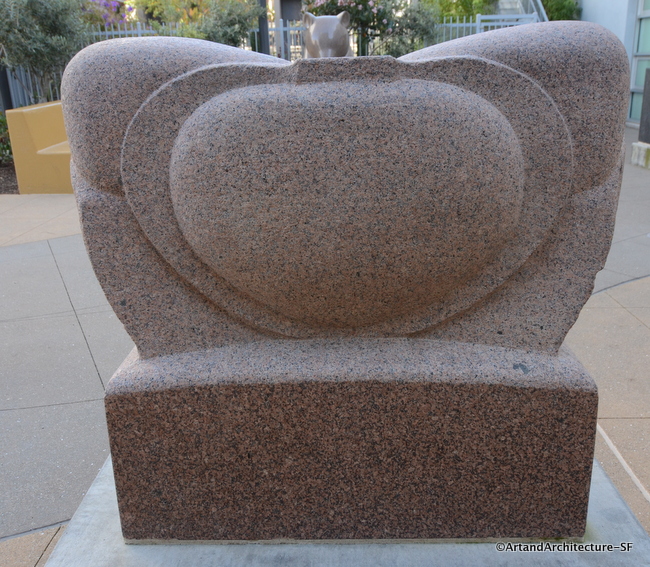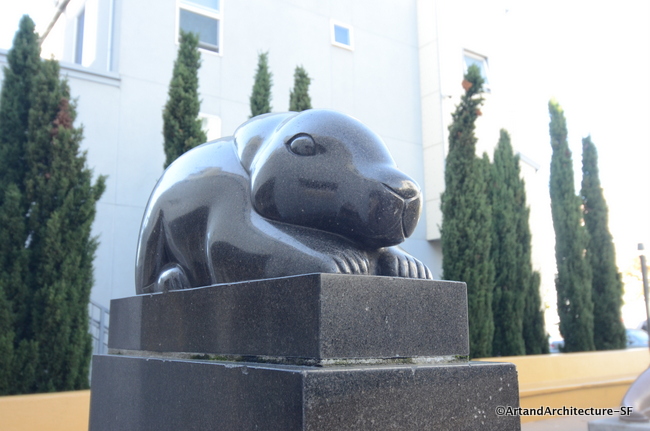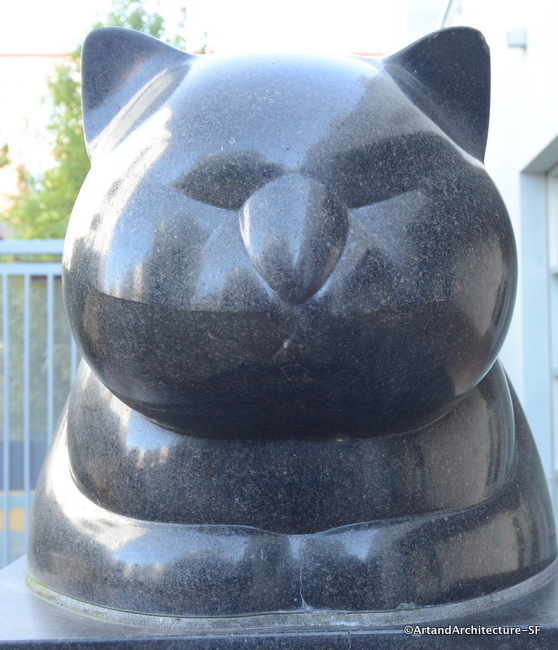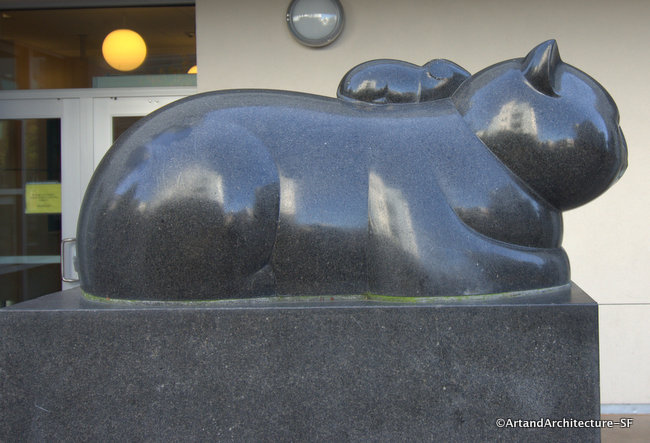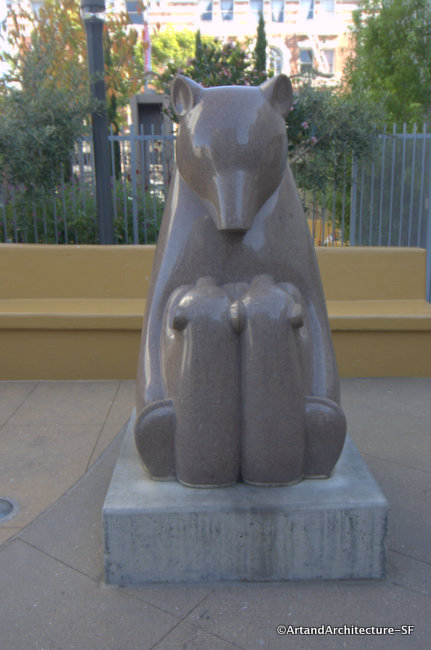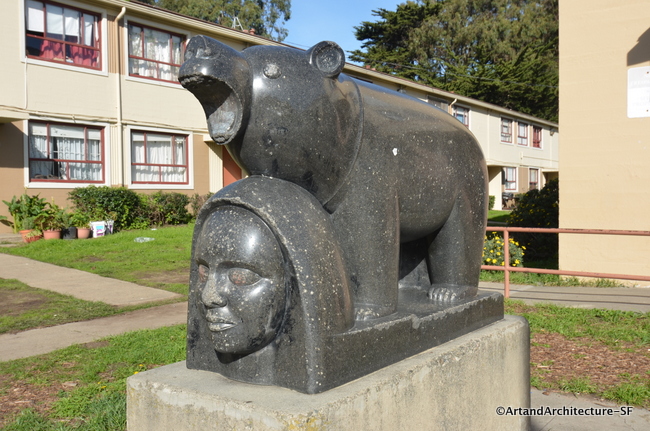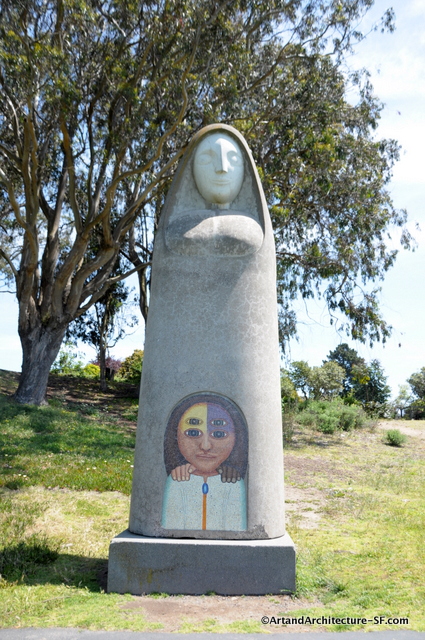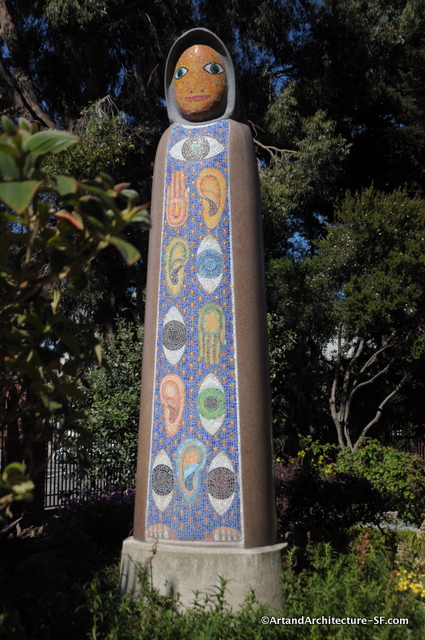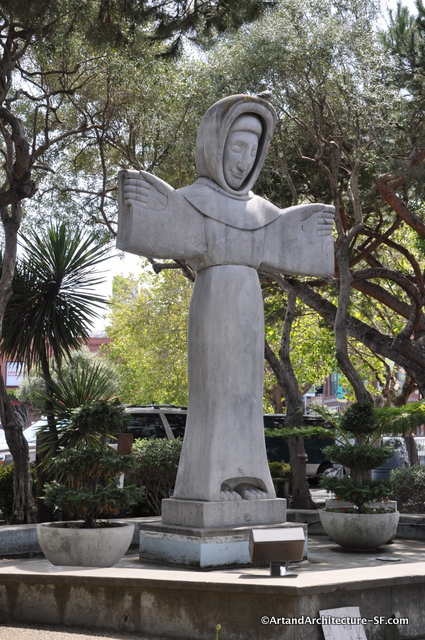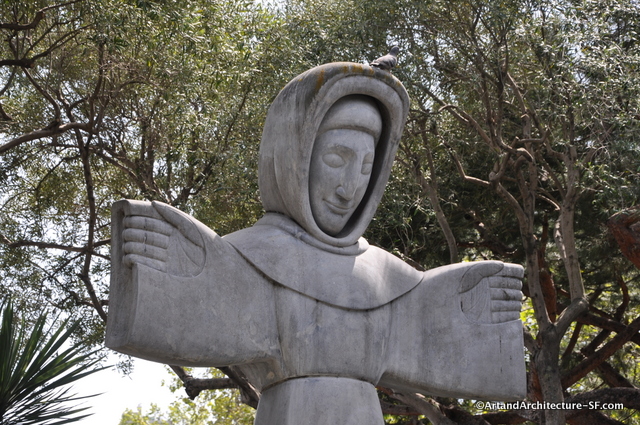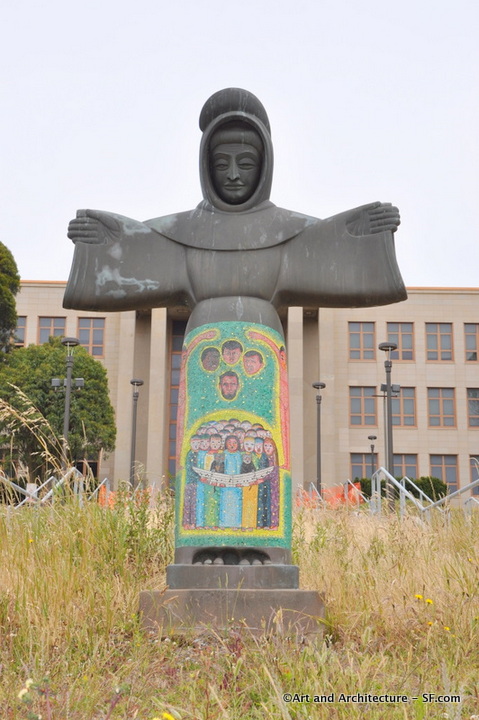Valencia Gardens Housing Project
Corner of Maxwell Court and Rosa Parks Way
These animal sculptures at Valencia Gardens were sculpted by Beniamino (Benny) Bufano. They were done in the 1930s for the Work Progress Administration Project at Aquatic Park. In the 1940s, when the federal government pulled out of San Francisco the sculptures were given to the City of San Francisco and became the charge of the San Francisco Art Commission.
There are two other sculptures that were part of this grouping. The Frog and The Seal are still at Aquatic Park.
*
*
*
*
*
*
This collection of statuary is by San Francisco darling Beniamino Bufano. They sit in a courtyard of the completely newly rebuilt Valencia Garden Housing Project.
During the work that was done at Valencia Gardens, the statues were placed at the Randall Museum for restoration and the enjoyment of the citizens of San Francisco.
The $66 million development of the new Valencia Gardens replaced 246 dilapidated and blighted housing units with 260 affordable homes for extremely-low and low-income families and seniors. Valencia Gardens is located on a 4.9-acre site between Valencia, Guerrero, 15th, and 14th Streets in the Mission District, the same location as the previous public housing which stood for over sixty years.
After almost a decade of planning, the revitalization of Valencia Gardens was made possible through a network of partnerships and collaborations at the local, state and federal levels. As a HOPE VI development, $66 million in development financing was provided by both the public and private sectors.
The design and architecture of Valencia Gardens are based on new urbanism principles that have shown to increase the quality of life and sense of community in other HOPE VI affordable housing developments. Most importantly, Valencia Gardens is integrated into its neighborhood with new public roads and walkways, as opposed to being isolated by fencing, as was the case with the previous project.
